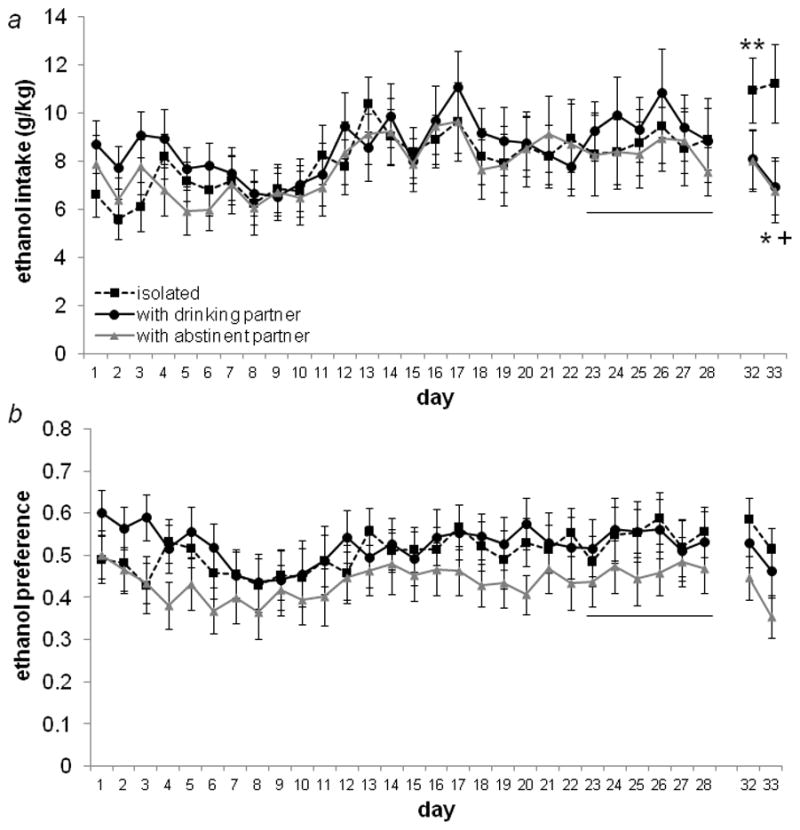Figure 1.

Daily ethanol intake (a) and preference (b) in Experiment I. Following 28 days of 24 hour access to 10% ethanol in a two-bottle choice test, ethanol was removed for 72 hours. Before ethanol access was resumed on Day 32, animals either remained isolated (“isolated”) or were placed in mesh-divided social housing with a familiar same-sex social partner that was also drinking alcohol (“with drinking partner”) or water only (“with abstinent partner”). A pre-deprivation baseline was calculated from the average of the final 6 days of initial access (Days 23–28, underlined). Relative to baseline, ethanol intake was significantly increased in animals that remained isolated following deprivation (**p=0.03), indicative of an alcohol deprivation effect. Animals that were housed with a social partner following deprivation showed no change in either ethanol consumption (a) or preference (b). On the second day post-deprivation (Day 33), animals housed with a social partner had reduced ethanol intake (with abstinent partner: *p=0.05; with drinking partner, trend only: +p=0.057).
